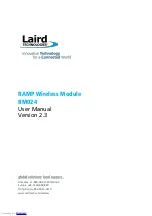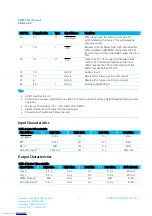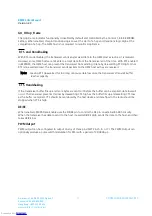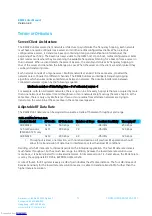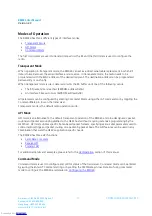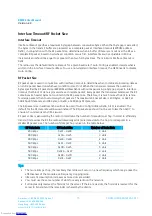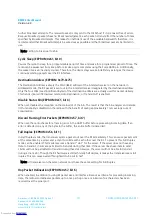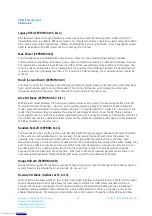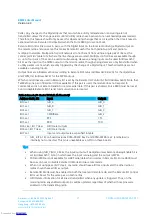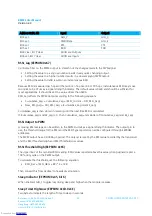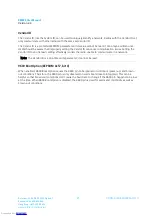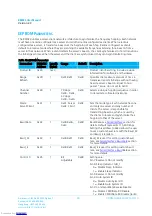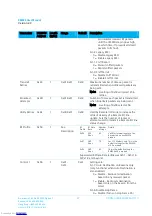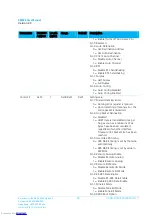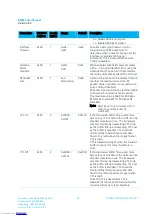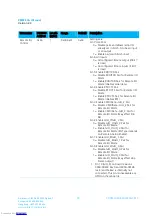
RM024 User Manual
Version 2.3
Americas: +1-800-492-2320 Option 2
Europe: +44-1628-858-940
Hong Kong: +852-2923-0610
www.lairdtech.com/wireless
15
CONN-GUIDE-RAMP24-0413
Interface Timeout/RF Packet Size
Interface Timeout
Interface timeout specifies a maximum byte gap between consecutive bytes. When that byte gap is exceeded,
the bytes in the transmit buffer are processed as a complete packet. Interface timeout (EEPROM address
0x58), in conjunction with the RF packet size, determines when a buffer of data is sent out over the RF as a
complete RF packet, based on whichever condition occurs first. Interface timeout is adjustable in 200 us
increments and should be equal to or greater than two full bytes times. The minimum interface timeout is
0x02.
The radio uses the default interface timeout for a given baud rate if Auto Config is enabled, despite what is
written in the interface timeout address. To use a non-standard interface timeout, the OEM needs to disable
Auto Config.
RF Packet Size
RF packet size is used in conjunction with interface timeout to determine when to delineate incoming data as
an entire packet based on whichever condition is met first. When the transceiver receives the number of
bytes specified by RF packet size (EEPROM address 0x5A) without experiencing a byte gap equal to interface
timeout, that block of data is processed as a complete packet. Every packet the transceiver sends over the RF
contains extra header bytes not counted in the RF packet size. Therefore, it is much more efficient to send a
few large packets than to send many short packets. The maximum RF packet size is 239 bytes, or 0xEF, at
500 kbps RF data rate and 96 bytes, or 0x60, at 280 kbps RF data rate.
The RF packet size in address 0x5A will not be used if Auto Config (Address 0x56, bit 0) is enabled. The
default for the RF data rate will be used instead. The RF packet size should not be set to less than 0x07, to
ensure AT commands can still be issued.
RF packet size is also used by the radio to determine the number of data slots per hop. In order to efficiently
transmit data across the RF the radio automatically adds more data slots to the hop to correspond to a
smaller RF packet size. The number of slots per hop is given in the table below.
RF Data Rate
RF Packet Size
Number of Data Slots
280 kbps
0x01 – 0x09
4 slots
280 kbps
0x0A – 0x25
3 slots
280 kbps
0x26 – 0x60
2 slots
500 kbps
0x01 – 0x0C
6 slots
500 kbps
0x0D – 0x25
5 slots
500 kbps
0x026 – 0x47
4 slots
500 kbps
0x48 – 0x7D
3 slots
500 kbps
0x7E – 0xEF
2 slots
Tips:
The more slots per hop, the less likely that retries will occur on a new frequency which may reduce the
effectiveness of the module as a Frequency Hopping radio.
Idle current consumption increases as more slots are added.
You must use the same number of slots for every radio on the network.
Full duplex only reserves the first slot for the server. If there are six slots, the first slot is reserved for the
server to transmit and the remainder is shared by the clients.
Downloaded from
Downloaded from
Downloaded from
Downloaded from
Downloaded from
Downloaded from
Downloaded from
Downloaded from
Downloaded from
Downloaded from
Downloaded from
Downloaded from
Downloaded from
Downloaded from
Downloaded from

